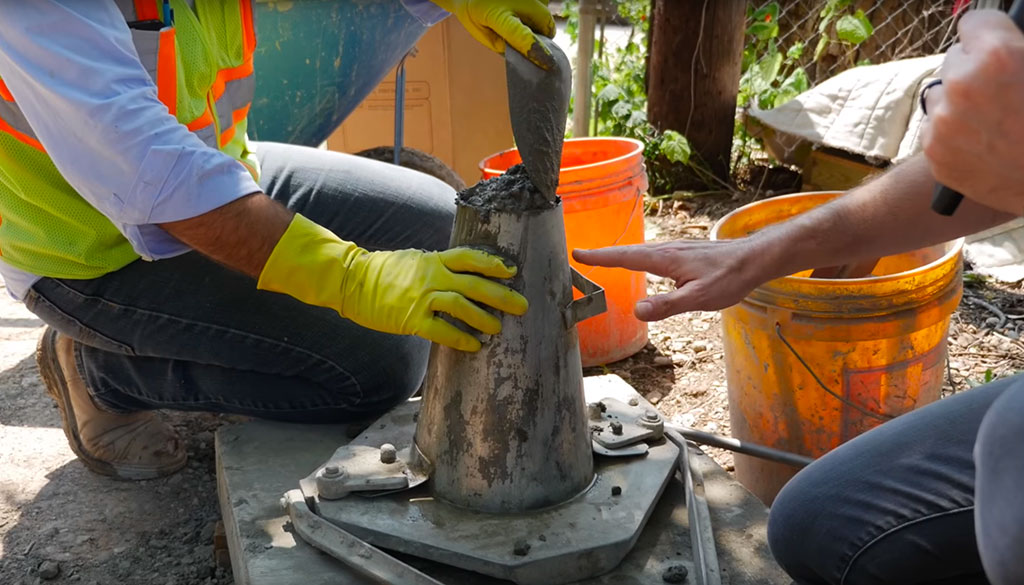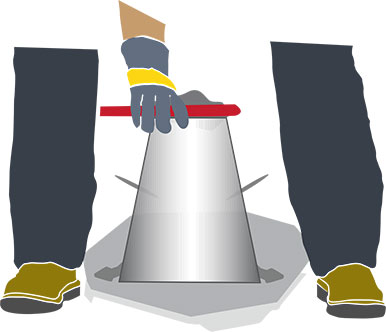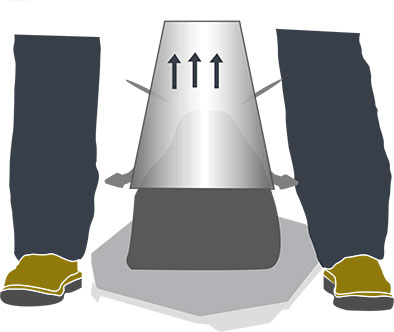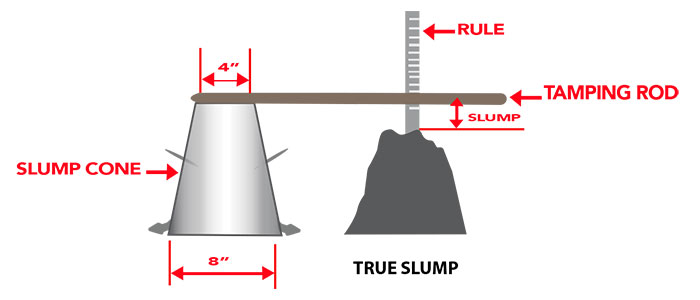Concrete Slump Testing
- January 14th, 2021
- Category: Equipment Guides

Knowing the quality of the concrete being used in construction is a requirement at building sites worldwide. Concrete slump testing is a quick and easy procedure that can be performed in real-time and on-site that is used to determine the workability as well as the consistency of fresh concrete. Concrete with slump values that are too low or too high can be identified and corrected prior to use.
Concrete Slump Test Equipment
Some specialized, yet relatively inexpensive, testing equipment is required prior to perform the slump test. It is important that the equipment being used complies with international standards such as:
- ASTM C143, ASTM C11611, ASTM C192 and ASTM C1712 as set by the American Society for Testing and Materials;
- AASHTO T119 and AASHTO BS1881 as set by the American Association of State Highway and Transportation Officials;
- BS EN 12350-2 as set by the British & European standard
- Indian standard IS 1199-1959
It is important to obtain the following items to perform the slump test:
- Slump Cone: Cone shaped mold that can be made of steel or plastic and should measure 8" (203mm) dia. at base, 4" (102mm) dia. at top and 12" (305mm) high.
- Base Plate: The slump cone will sit on the base during the test and it should include bolt-on clamps to hold the cone steady during testing. A base plate with a handle will make it easier to remove and can also be used as a guide to measure the slump.
- Tamping Rod: A steel rod used during testing and should measure .625" (16mm) dia. x 24" (610mm) long.
- Measuring Tape: Used to measure the slump.
The following items are not required to perform the test itself, but will make the testing easier and can increase efficiency:
- Scoop: A round nose scoop with bowl dimensions 8.25" (210mm) length x 5.25" (133mm) width x 3" (76mm) depth.
- Funnel: An aluminum funnel will assist in filling.
- Trowel: A forged steel trowel will assist in filling.
Preparations Prior to Slump Test
Prior to starting the test, the mold, base plate and all testing materials should be clean and free of any remnants of prior testing. The inside surface of both the base and the mold should be dampened before beginning the test to reduce surface friction.
Find a flat surface for testing and place the mold on top of the base plate. This area should also be free from vibrations. The testing should only be performed on fresh, newly mixed concrete for best results.
Concrete Slump Testing Procedure
1. Fill the mold with fresh concrete in three layers (see images 1-3). Each layer should be tamped uniformly, 25 times using the rounded end steel rod

2. Once the cone is full, level the top by removing any excess concrete from the top of the cone.

3. Hold the handles found at the base of the mold and carefully lift the cone vertically.

4. The resulting unsupported concrete will therefore slump and the decrease in height should be measured to the nearest 5mm (0.25 inch) at the center point.

Interpreting Slump Test Results

True Slump – Here the general mass of the concrete drops evenly without any disintegration. This is the desired test result.
Shear Slump – Here one side of the concrete shears or falls from the main portion of concrete. This is an indication that the concrete lacks cohesion.
Collapse Slump – Here the concrete completely collapses. This is an indication that the mix is too wet.
Zero Slump – Here the concrete maintains the shape of the mold. This type of concrete is too stiff and has almost no workability.
If shear slump, collapse slump or zero slump are found, the slump test should be repeated. If the second test also results in a failed slump test, then that batch of concrete should be rejected according to the established safety standards.
Our concrete slump chart describes the applications for the various slump values that may be obtained from this testing.
Concrete Workability by Slump

Humboldt sells a variety of Slump Testing Equipment and Accessories for on-site or laboratory Slump Testing of fresh concrete. Please contact the testing experts at Humboldt with any questions about construction materials testing.
Photo courtesy of Build with Matt Risinger. View YouTube video.

